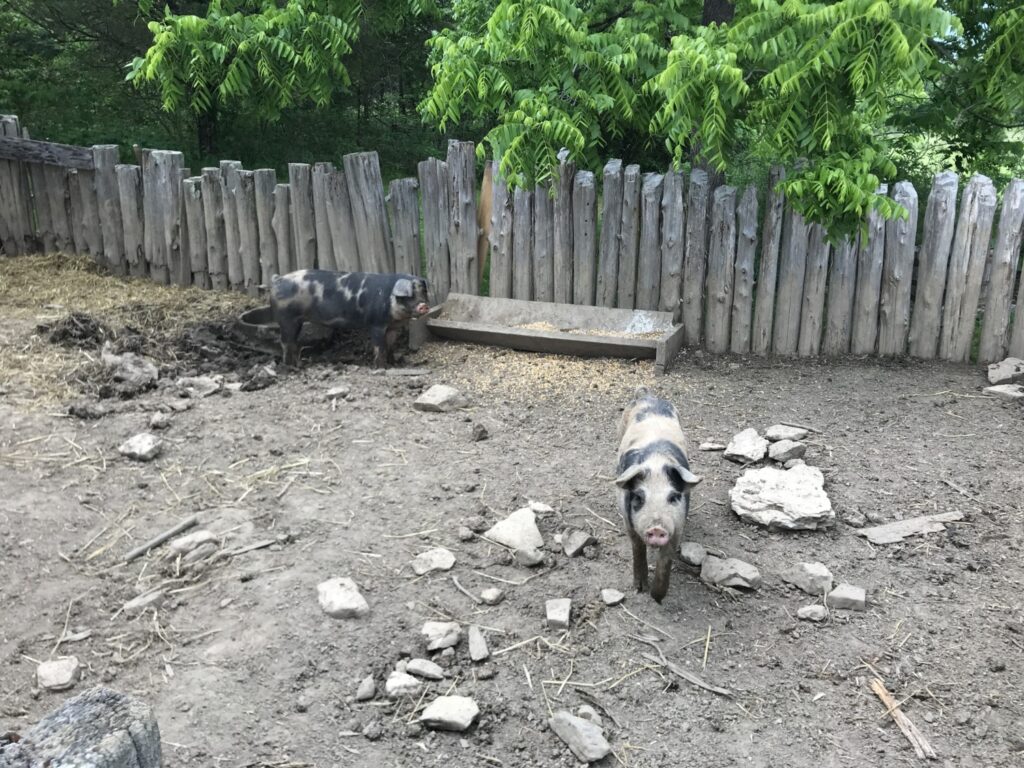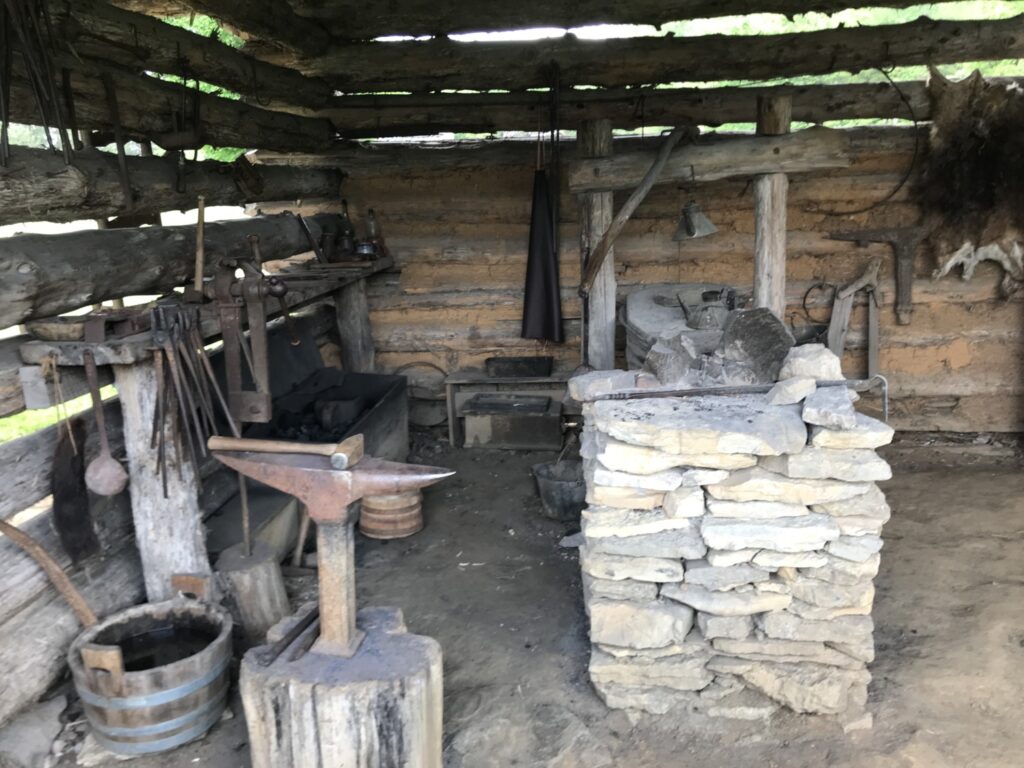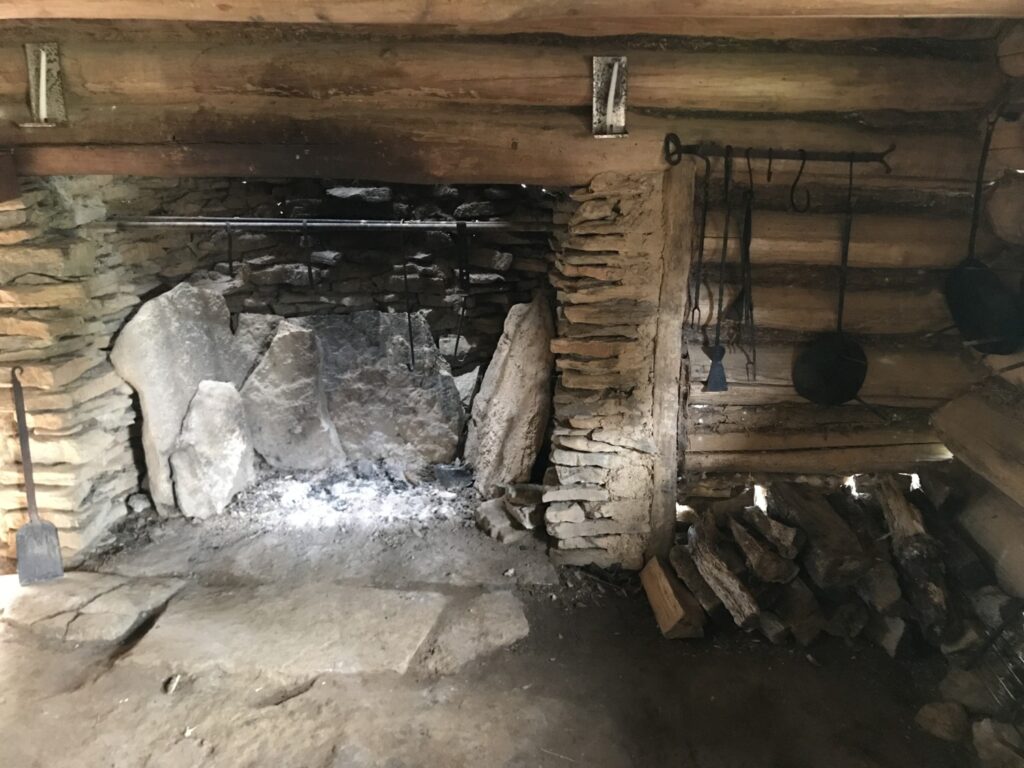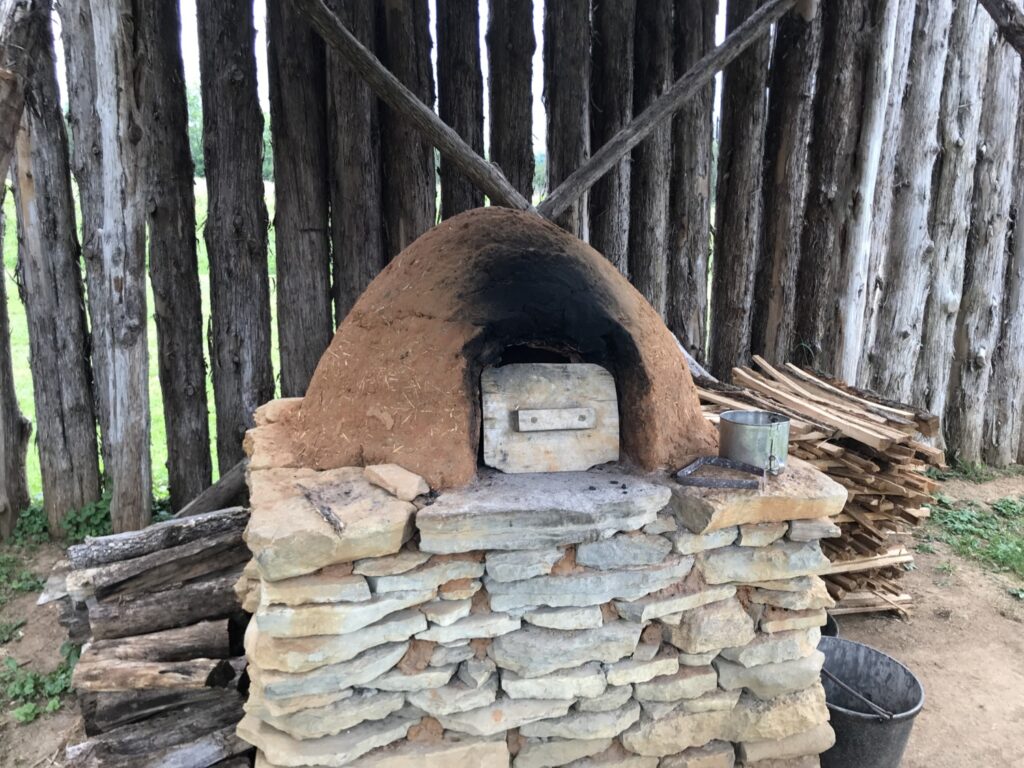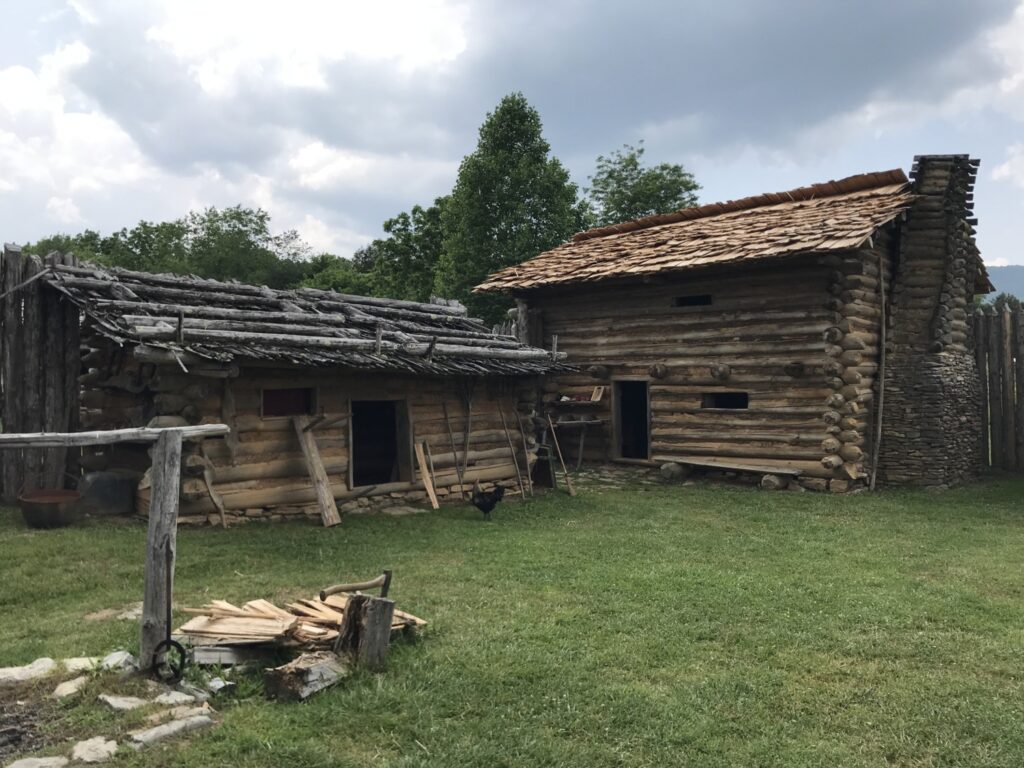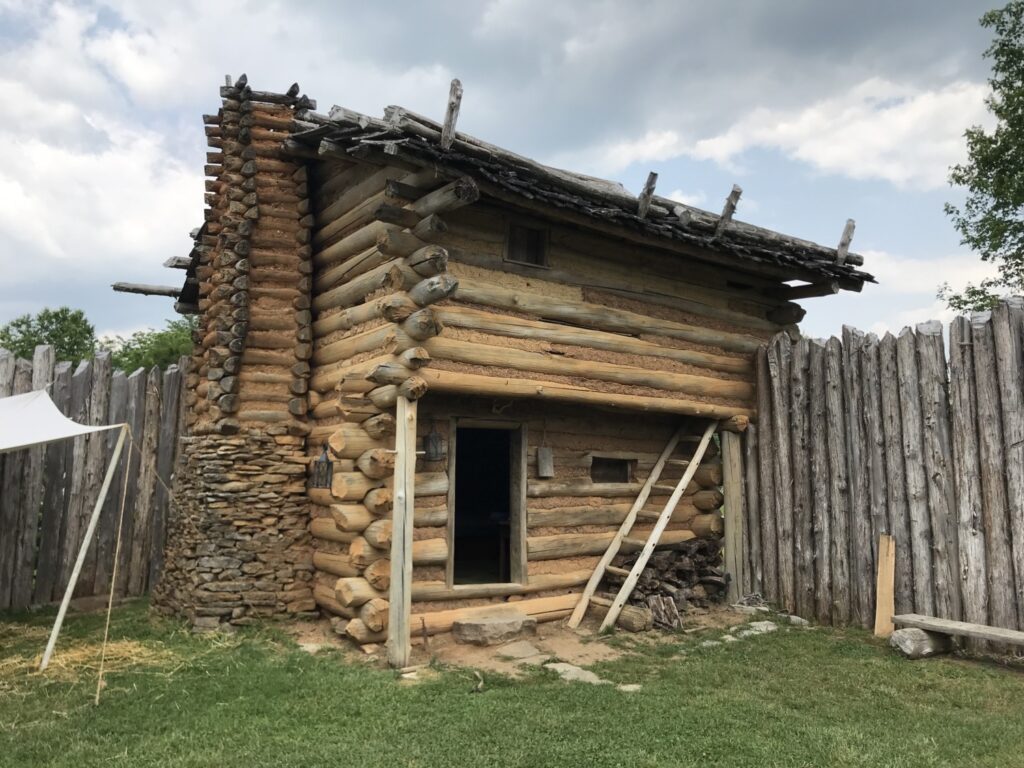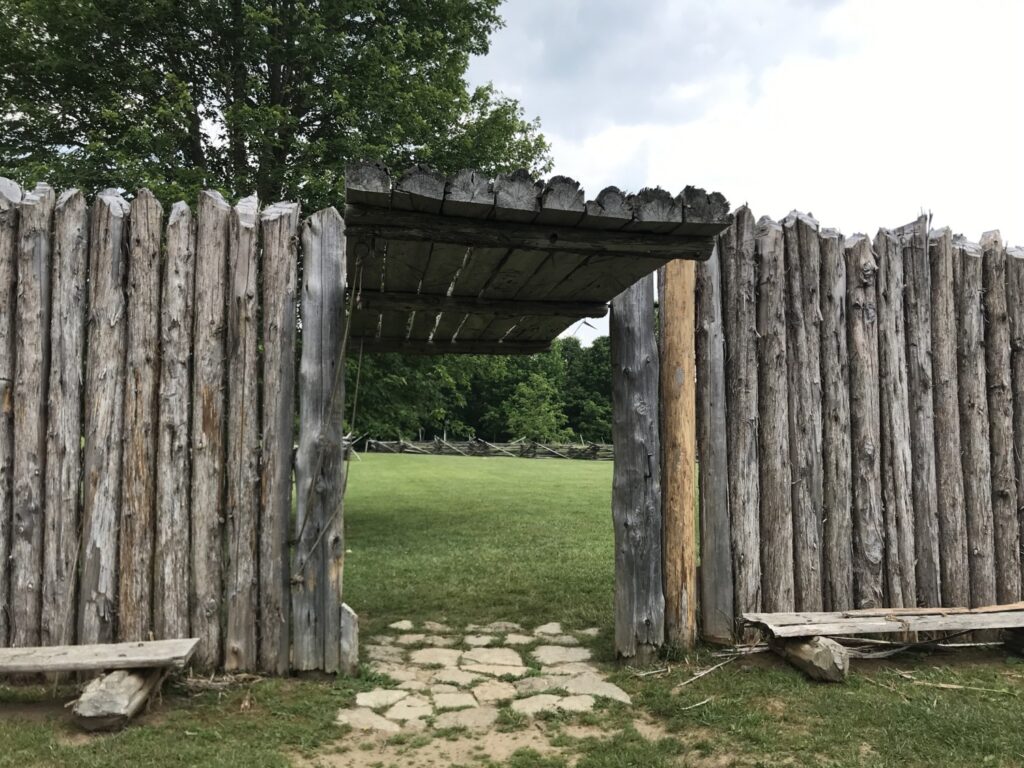Tom and I explored Wilderness Road State Park on one of our days off last week. Wilderness Road State Park is part of the Virginia State Park system and is just south of Cumberland Gap National Historical Park. The park and the Visitors Center is open every day, but Tom and I were most interested in Martin’s Station, the recreated living history settlement. Martin’s Station is open Wednesday through Sunday from 10 until 4.

When we got to the park, just a few miles from our campground, we paid our $5 per car fee at the Visitors Center desk. Then we watched the movie and looked around the museum. There is a life-size diorama of the Treaty at Sycamore Shoals, in which the Cherokee ceded Kentucky to Richard Henderson (illegally on both sides). The third time I walked past the diorama it talked. I’m not sure why it didn’t talk the first two times.
After checking out the Wilderness Road State Park Visitors Center, Tom and I walked back to Martin’s Station, an outdoor living history museum depicting life on Virginia’s 1775 frontier. 1775 is the year that the first settlers, led by Daniel Boone, traveled through the Gap. It is the period that Tom and I focus on in living history at this park, so we were interested to see what they were doing.
State parks do not have the same rules as parks in the national park system. Consequently, they can reconstruct buildings or build things just because they pertain to the era. The reconstructed Martin’s Station had a fort with several houses built in the edges. Then there were outlying cabins and workshops. Chickens roamed around and there were pigs in a pen and sheep in a field.
Three men in period clothing were putting shakes on a cabin. They were using nails, for safety reasons, but told us that the pioneers at Martin’s Station would not have used nails. Martin’s Station was founded by Joseph Martin and served as a supply stop for pioneers going through the Gap. We were impressed by the lived-in look of the cabins. Dishes and tools were sitting out, ready for a settler to use the next time they came in. There was a carpenter’s shop and a blacksmith’s shop.
Around the back of the fort was a Cherokee village. It had a common house with a fantastic thatched roof. We were so impressed with the roof that we went back to talk to the shinglers. Turns out the park hired an English thatcher to come in and do the thatch work on the house. No wonder it was so perfect!
Wilderness Road State Park has special events about once a month at Martin’s Station. They have quite a few staff interpreters and a host of volunteers that come in for the special events. We met the chief of interpretation and he invited us to dress out and come to their next special event on June 10.
In addition to Martin’s Station and the Visitors Center, Wilderness Road State Park has picnic shelters, a 100-seat amphitheater, ADA-certified playground, sand volleyball court and horseshoe pits. Visitors can hike, bike or horseback ride on the 8.5-mile Wilderness Road Trail linking the park with more than 50 miles of trails in Cumberland Gap National Historical Park. The 1870s era Karlan Mansion is available for weddings and meetings.
Tom and I really enjoyed our visit to Wilderness Road State Park and Martin’s Station. It will certainly be a place we recommend to visitors and will probably visit again ourselves.





